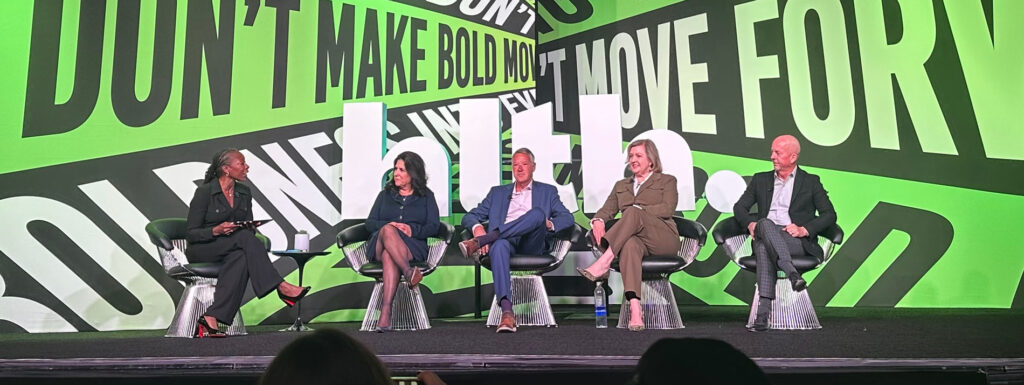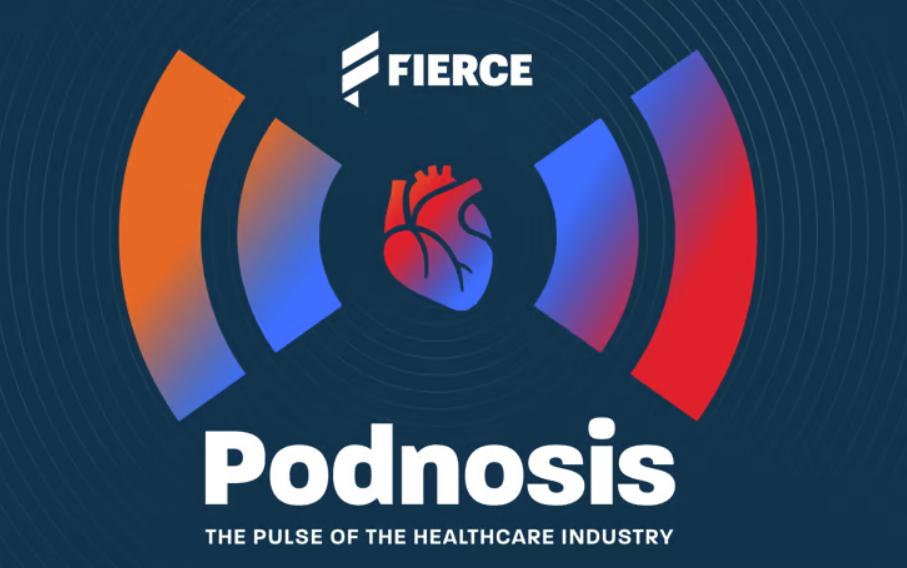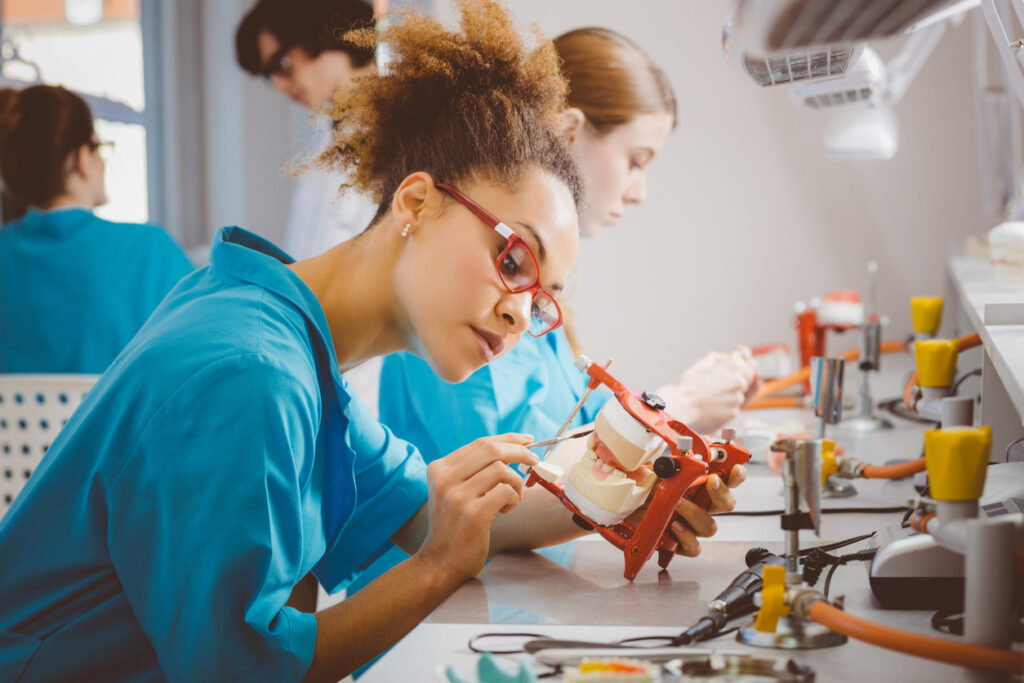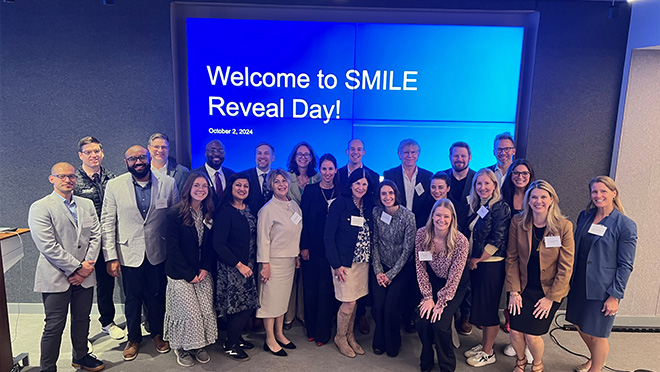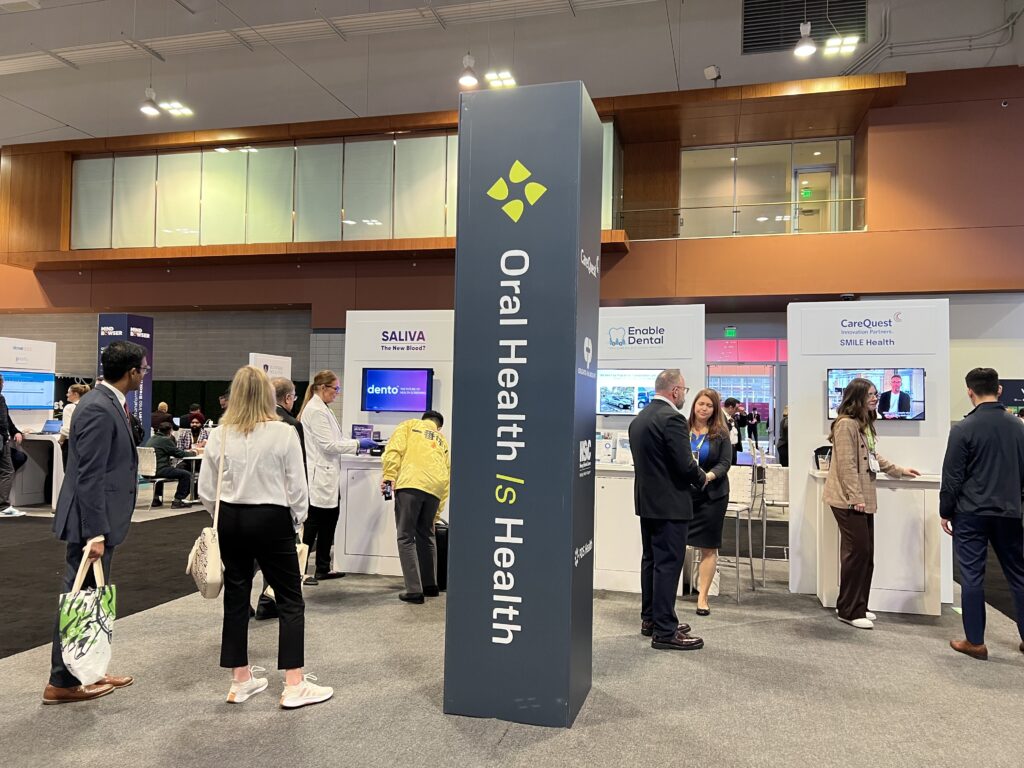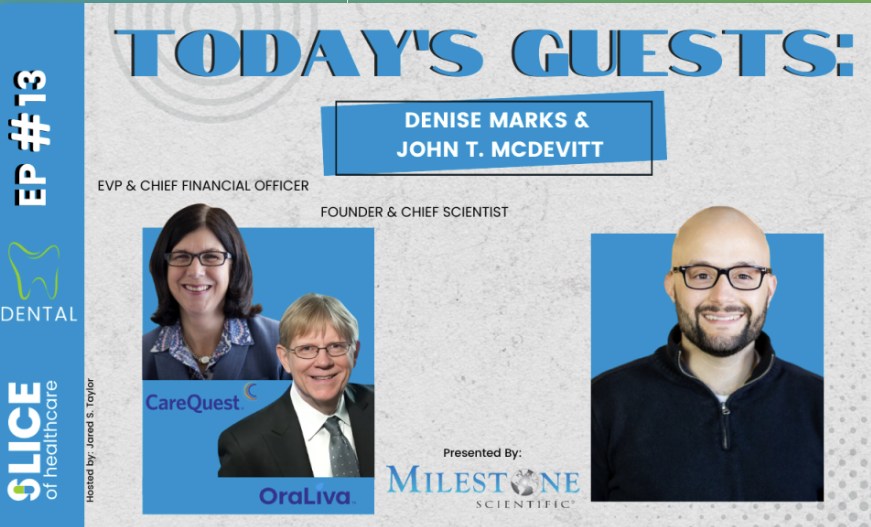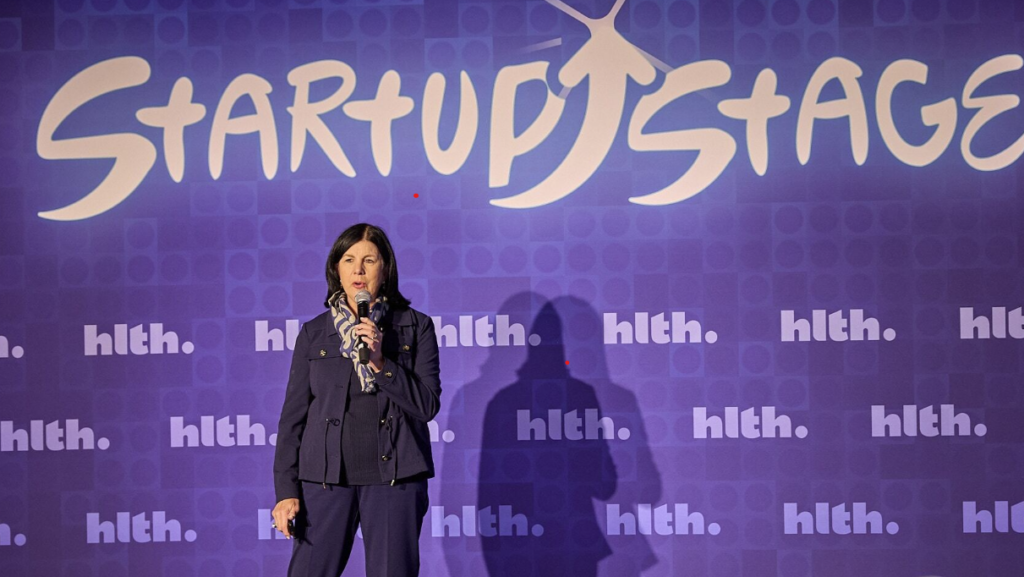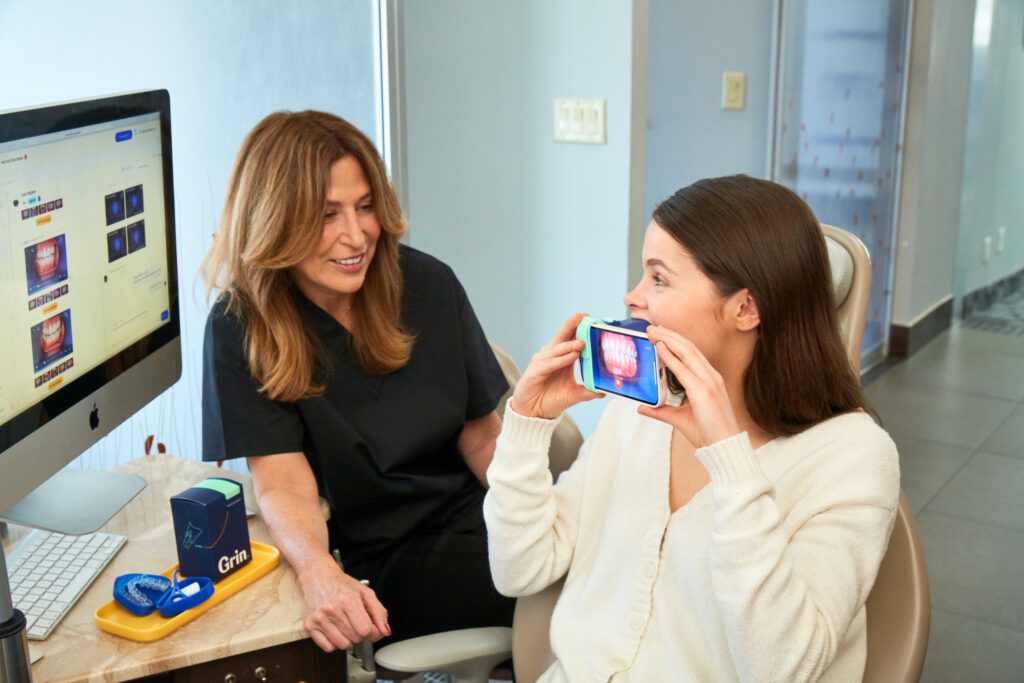The “Say Ahh!” panel discussion on Monday at the HLTH Conference in Las Vegas was filled with optimism, passion, and innovative ideas about the link between oral health and overall health — the mouth-body connection. The session did have one regret, though:
“I wish I was 20 years younger,” joked Stephen Thorne, founder and CEO of PDS Health. “It is the golden age of oral health care! It really is the best time to be in oral health.”
Moderated by Myechia Minter-Jordan, MD, MBA, senior advisor at CareQuest Institute for Oral Health, Thorne and three other panelists — Maria Ryan, DDS, PhD, executive vice president and chief clinical officer at Colgate-Palmolive; Miles Varn, MD, chief medical officer at Sun Life; and Sarah Chavarria, CEO and president of Delta Dental of California and affiliates — discussed the limitless potential for oral health innovation.
“Great discussion on investment in oral health from a venture perspective,” wrote Burgess Harrison, MBA, on LinkedIn after the session. “Oral health means better health and it matters.”
The panelists talked about how the landscape has changed in the last decade, from one where oral health was siloed — “over there in a jar on a shelf” — to one where it is linked to overall health in myriad ways.
“We don’t debate the data and science anymore. The horse has left the barn,” Thorne said, referring to the growing body of evidence linking oral health to overall health. “Now, we can have real impact. It’s about giving patients opportunity to engage in improving their oral health.”
PDS Health, formerly Pacific Dental Services, is helping to point the way toward seamless medical-dental integration.
“We’re one of the largest dental providers in the world, and we changed to PDS Health to integrate primary care providers,” Thorne said. “Eighty percent of people in the US access care through nurse practitioners, physicians, dentists, or hygienists. These are the gatekeepers, and the best way is under one roof.”
PDS Health, Henry Schein, Colgate-Palmolive, and CareQuest Innovation Partners partnered to show what care without siloes can look like at the first-of-its-kind Oral Health Pavilion at HLTH. The interactive pavilion, centered around three unique patient journeys, showcased the ease of collaboration between health care professionals and highlighted the essential role of oral health in overall wellness. It included an integrated oral health visit, the importance of prevention at home, and an impressive collection of startups that are making care more accessible and equitable across the US.
“Oral health is essential to overall health and well-being,” said Ryan, echoing the theme of the pavilion. “There is an economic rationale for investing in oral health.”
Aligning Stakeholders Across the Oral Health Landscape
Ryan, who spent time as a clinician and an educator before joining Colgate-Palmolive, pointed to the importance of empowering consumers.
“As a company that is in 60% of all homes,” she said, “we can educate consumers about the connection between oral health and overall health.”
How? She shared three resources that are helping to inform and inspire the industry:
- Know your OQ.com, a website that helps you understand your oral health quotient. “You take a quiz and find out what you know,” Ryan said. “People can learn, for example, about gum disease and then ask their physicians about it.”
- The 100 Million Mouths Campaign, an initiative that is working to create 50 oral health education champions, one in each state, over the next decade. The aim is for health profession schools and programs to integrate oral health into their curricula to bridge gaps in oral health access.
- “The Economic Rationale for a Global Commitment to Invest in Oral Health,” a white paper from the World Economic Forum. “That has encouraged employers to look at whether they are covering dental,” she said. “It’s a lot about education.”
Patients and employers are two critical pieces of the puzzle. Payers, providers, and policymakers need to see through the same lens, too.
“There are opportunities to collaborate more across the health care continuum,” said Chavarria. “How do we create the best journey for patients?”
Aligning incentives, the panel agreed, is necessary.
“Carriers and employers have to get aligned to help payers save some money,” Thorne said. “It’s about creating awareness. It’s reaching patients and employers about the role oral health plays in preventive health. The more we can invite patients to take part in preventive care, the more we can all save on the back end.”
Six Startups Shining in Oral Health Innovation
Saving on the back end, of course, takes innovation. It takes a prevention-first mindset and a focus on underserved populations.
“This is a real growing space,” said Ryan. “If you think about prevention — most of the diseases are preventable — new innovations in prevention are extremely important.”
Six of those innovations, courtesy of the 2024 SMILE Health startups, were on display at the pavilion:
- DentKits provides at-home dentures utilizing digital denture and teledental technologies.
- DifferentKind is an experience management leader in oral health, producing data and insights from patients and teams that drive improved outcomes for patients, practices, and payers.
- OraLiva provides non-invasive, clinically validated, AI-assisted diagnostics for screening oral lesions that delivers highly accurate diagnostic information to dental and medical providers.
- ThriveLink deploys AI telephonic enrollment agents to help families enroll verbally in social and health programs, including health insurance, food stamps, utility assistance, and more.
- Umayana is a biotech company with a range of products, Murnia, that prevents and treats severe cancer and acute wounds with its patented molecular compound and formulations.
- Yumlish provides tech-enabled, culturally affirming health education programs for Medicaid enrollees, starting in Spanish-speaking populations.
All six companies shined on the Startup Stage on Tuesday, delivering polished pitches about their solutions to a standing-room only crowd. The “Demo Day” event was the culmination of the 2024 Smile Health accelerator program, which featured a unique collection of transformational solutions that are already improving oral health.
“Screenings, home testing . . . those are the areas that are ripe for innovation,” Ryan said. “We’re really moving into personalized technology.”
Thorne shared the same sentiment.
“We’re going from reactive to preventive and predictive — and, ultimately, to precision. It’ll happen in most of our lifetimes,” he said. “Movement is slow, but it’s not easy. If it was easy, it would have been done 10 years ago. We’re still figuring it out. But we’re almost there.”
Almost, but there’s still a lot of work to do.
“We’re going to have to do some big, bold things,” said Chavarria. “But there’s never been a more exciting time to be in oral health.”
